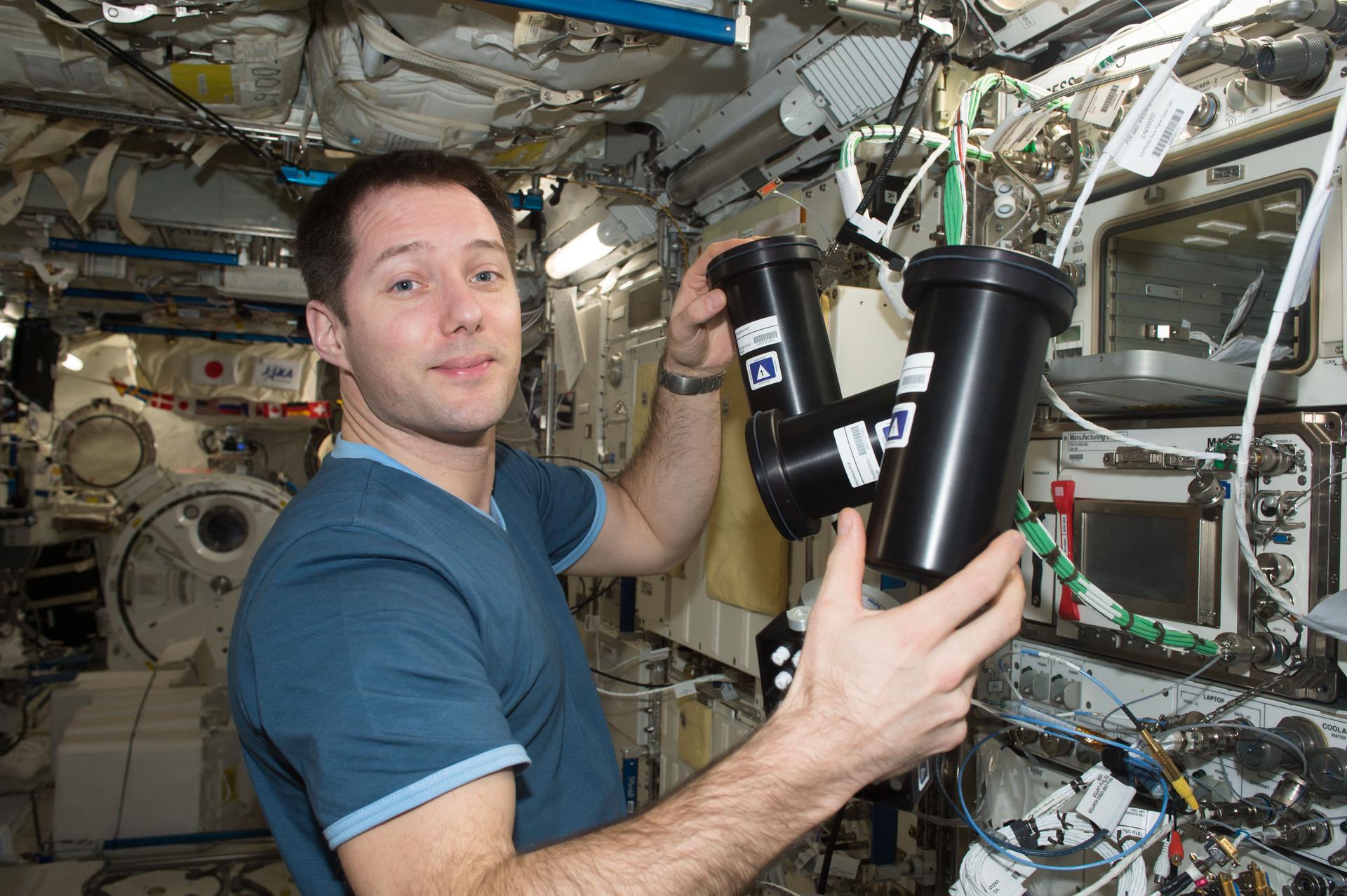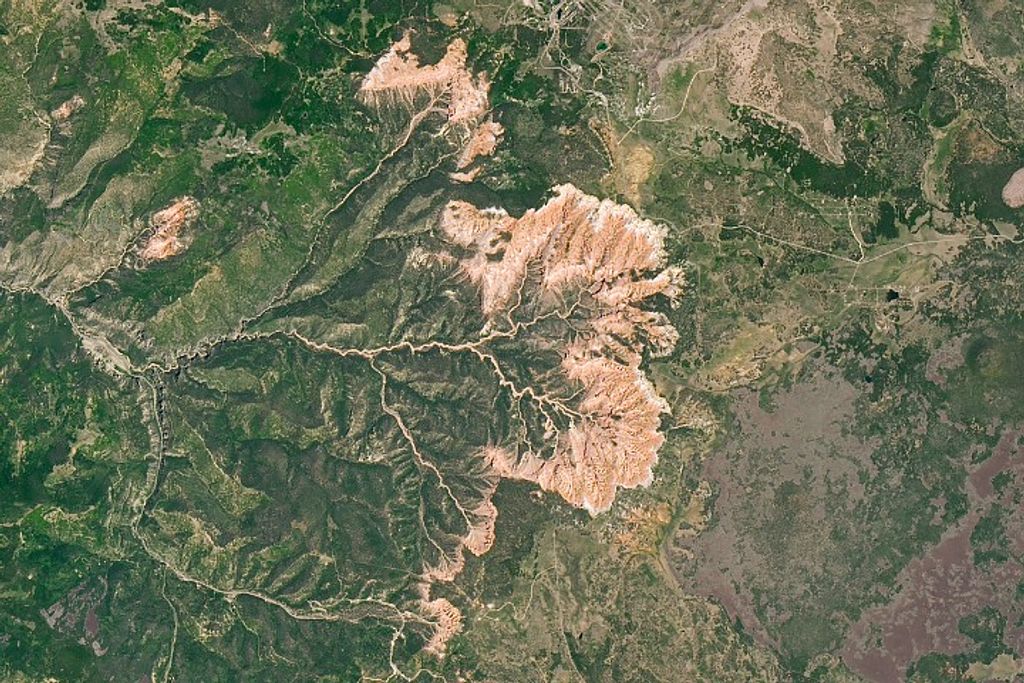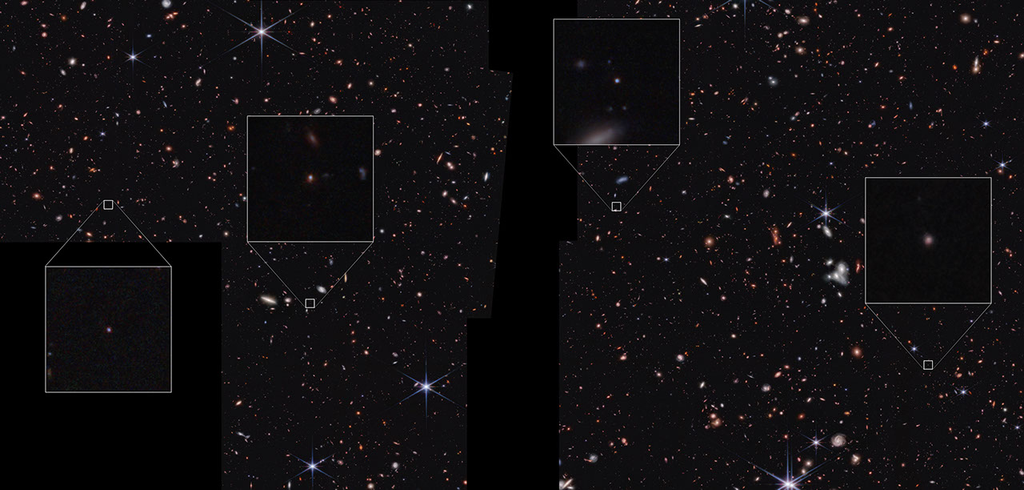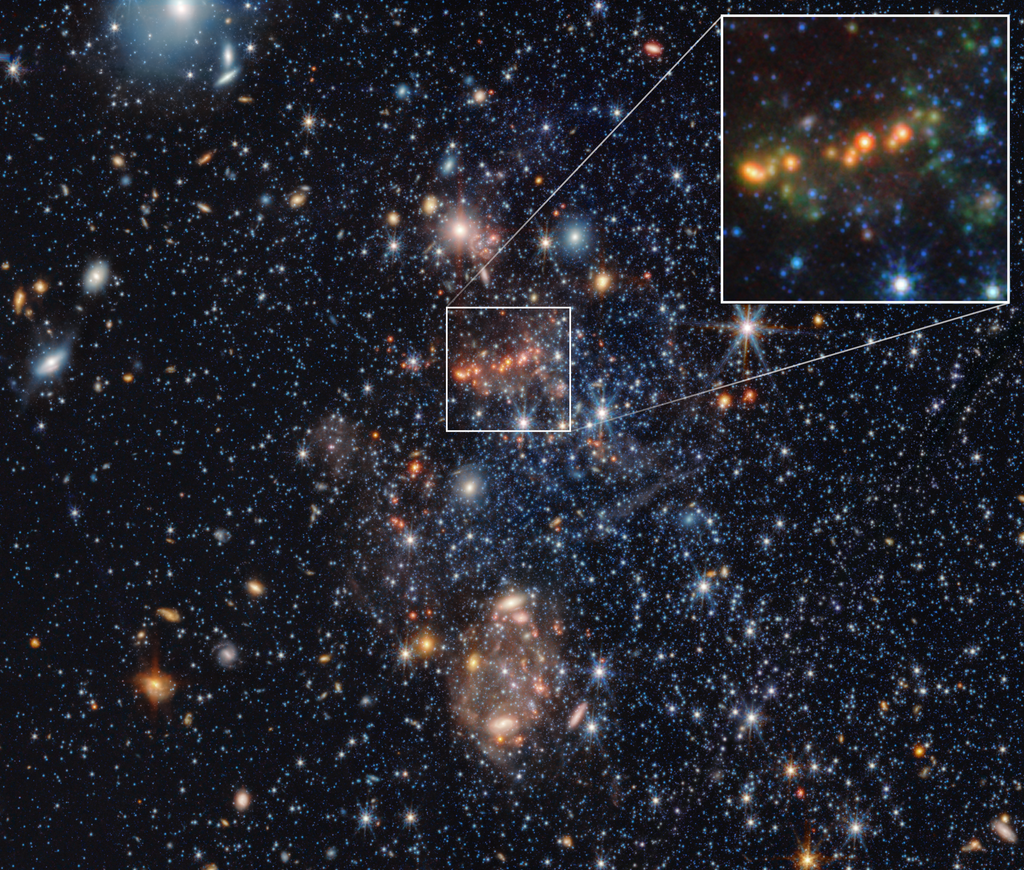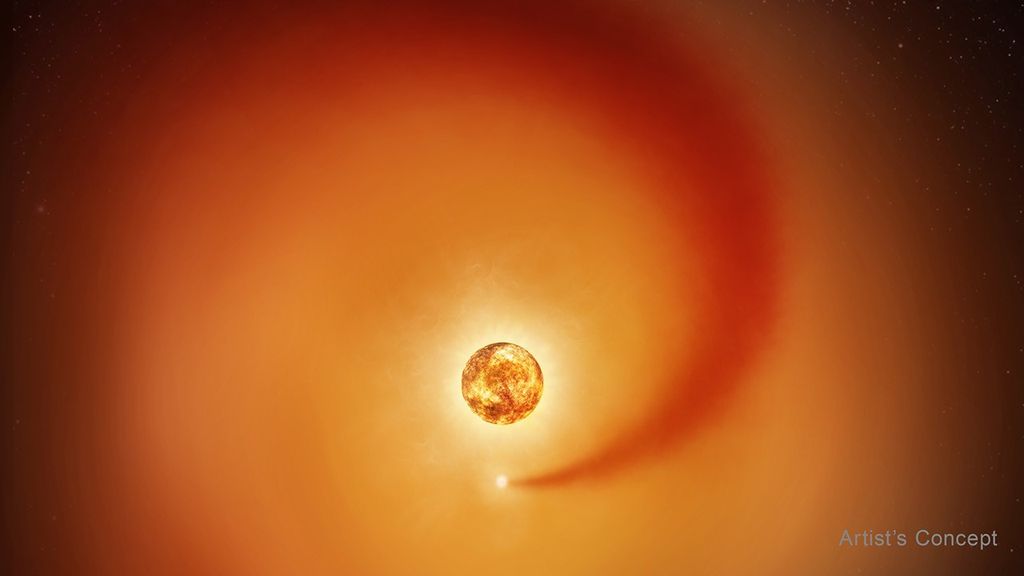1 min read
TW Hydrae Disk

Comparison images from the Hubble Space Telescope, taken several years apart, have uncovered two eerie shadows moving counterclockwise across a gas-and-dust disk encircling the young star TW Hydrae. The disks are tilted face-on to Earth and so give astronomers a bird's-eye view of what's happening around the star. The left image, taken in 2016, shows just one shadow [A] at the 11:00 o'clock position. This shadow is cast by an inner disk that is slightly inclined to the outer disk and so blocks starlight. The picture on the left shows a second shadow that emerged from yet another nested disk [C] at the 7:00 o’clock position, as photographed in 2021. The original inner disk is marked [B] in this later view. The shadows rotate around the star at different rates like the hands on a clock. They are evidence for two unseen planets that have pulled dust into their orbits. This makes them slightly inclined to each other. This is a visible-light photo taken with the Space Telescope Imaging Spectrograph. Artificial color, to enhance details, has been added.
About the Object
- R.A. PositionR.A. PositionRight ascension – analogous to longitude – is one component of an object's position.11:01:51.9054
- Dec. PositionDec. PositionDeclination – analogous to latitude – is one component of an object's position.-34:42:17.0316
- ConstellationConstellationOne of 88 recognized regions of the celestial sphere in which the object appears.Hydra
- DistanceDistanceThe physical distance from Earth to the astronomical object. Distances within our solar system are usually measured in Astronomical Units (AU). Distances between stars are usually measured in light-years. Interstellar distances can also be measured in parsecs.196 light-years
- DimensionsDimensionsThe physical size of the object or the apparent angle it subtends on the sky.Each image is 6.14 arcsec across, about 0.005 light-years
About the Data
- Data DescriptionData DescriptionProposal: A description of the observations, their scientific justification, and the links to the data available in the science archive.
Science Team: The astronomers who planned the observations and analyzed the data. "PI" refers to the Principal Investigator.The HST observations include those from program 16228 (J. Debes)
- InstrumentInstrumentThe science instrument used to produce the data.STIS/MIRVIS
- Exposure DatesExposure DatesThe date(s) that the telescope made its observations and the total exposure time.June 7, 2021
- FiltersFiltersThe camera filters that were used in the science observations.MIRVIS
- Object NameObject NameA name or catalog number that astronomers use to identify an astronomical object.TW Hydrae
- Object DescriptionObject DescriptionThe type of astronomical object.Face-on protoplanetary disk around a T Tauri star
- Release DateMay 4, 2023
- Science ReleaseHubble Follows Shadow Play Around Planet-Forming Disk
- CreditNASA, ESA, STScI, John Debes (AURA/STScI for ESA); Image Processing: Joseph DePasquale (STScI)

The images are separate exposures acquired by the STIS instrument on the Hubble Space Telescope. The color results from assigning an orange hue to a monochromatic (grayscale) image.
Related Images & Videos

Concentric Gas-and-Dust Disks Around Star TW Hydrae (Artist's Concept)
This artist's concept is based on Hubble Space Telescope images of gas-and-dust disks around the young star TW Hydrae. Hubble Space Telescope photos show shadows sweeping across the disks encircling the system. The interpretation is these shadows are from slightly inclined inner...
Share
Details
Claire Andreoli
NASA’s Goddard Space Flight Center
Greenbelt, Maryland
claire.andreoli@nasa.gov





